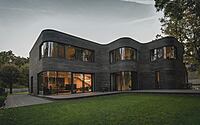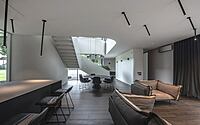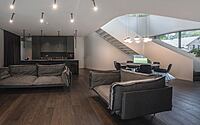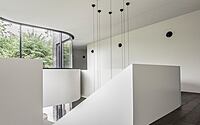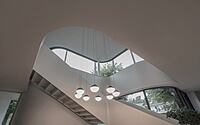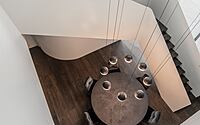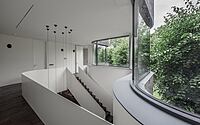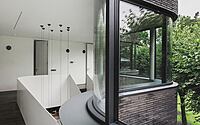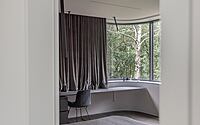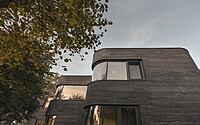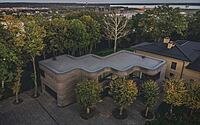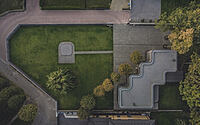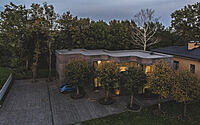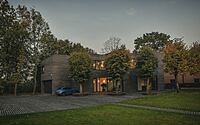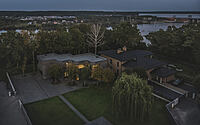Residential House in Kaunas by Architectural Bureau G. Natkevicius & Partners
Residential House in Kaunas, Lithuania, is a modernist two-story house designed in 2021 by Architectural Bureau G. Natkevicius & Partners.










Description
The plot is located on the slope of the Nemunas Valley river. Historically, it once happened that the Nemunas River was dammed, so the valley below remained, and the Kaunas Lagoon was formed nearby. The place is interesting cause on the other side, on the opposite bank of the valley there is a baroque complex of Pažaislis Monastery, which cannot be seen directly through the overgrown trees during the summer, but when the leaves fall, it is that tete-a-tete glimpse. Sometimes the places have a historical context, sometimes a natural one, and here, in addition to everything else, the place also have a very interesting certain moral, not real context, because it is only from stories, it is supposed, we can only say that there is a connection between this place and Pažaislis Monastery.
The plot is unique in that point, that after other plots were located around the perimeter and on the edges of the valley, this plot seemed to remain in the middle. The plot is large, has a small exit to the slope, from which you can see Pažaislis Monastery. The architects were faced with the task of whether functionally to try to build that house completely next to the slope, or to build it where there is a lot of empty space, pulling the building to the middle of the plot.
When moving the building to the middle of the plot, the architects had a great opportunity for creative space, but they wanted to preserve the large, beautiful linden trees that once lined the street, so a decision was made to insert the house between the slope and the linden avenue. Behind the building, a large plot of land remained empty in the center, resulting some disproportion, but this led to the idea of building the house next to the slope, in order to maintain that intangible connection with the monastery and a certain part of history, preserving that old linden avenue that once marked the streets on the slope contour. The architects had to figure out how to insert the house between the slope and the avenue of linden trees, so exactly this row of linden trees determined a certain configuration of the house. The house is curled, it looks like a staircase has been laid, which is rounded so that the house wouldn’t be so aggressive, that would be soft, that the gaze would slide through it. The lindens growing next to it seem to echo this gradation.
As the decision was made to build the house between the slope and the alley, which runs diagonally, the volumes of the building had to be built according to the same principle. On that side of the house, which marks the linden avenue, all common rooms are located – windows, corridors, main entrance hall, staircase, this creates a little intimacy when moving inside, and all living rooms, all main spaces look at the valley.
The composition of the house keeps the spirit of Kaunas modernism alive, as the rounding of the volumes of the house gives the building the impression of modernism. Curved walls, curved corner window panes create a kind of hint, a reminiscence of the interwar architecture, which is heavy, monumental, characterized by high room heights, high bedrooms. The aim was to create a feeling of spaciousness, because both the size of the empty plot and the large scale of the Kaunas Lagoon seem to dictate the massiveness of the volume of the house. Curved handmade bricks are used to build the house.
The interior of the building is interesting in that point, that it reproduces the large scale, some of the partitions are rounded, the curved windows and the undulation of the facades can be felt in the interior. The interior is dominated by high ceilings, white walls, white railings, large plank floors and solid, good quality leather furniture.
Photography courtesy of Architectural Bureau G. Natkevicius & Partners
Visit Architectural Bureau G. Natkevicius & Partners
- by Matt Watts